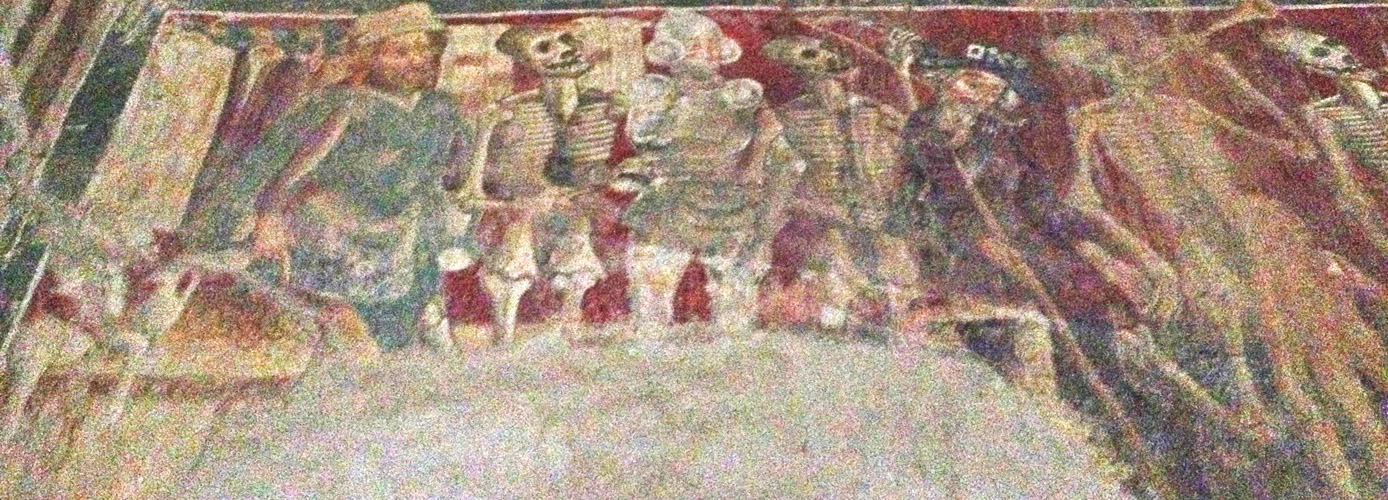
The far left of the fresco: a merchant (?) and a pilgrim.
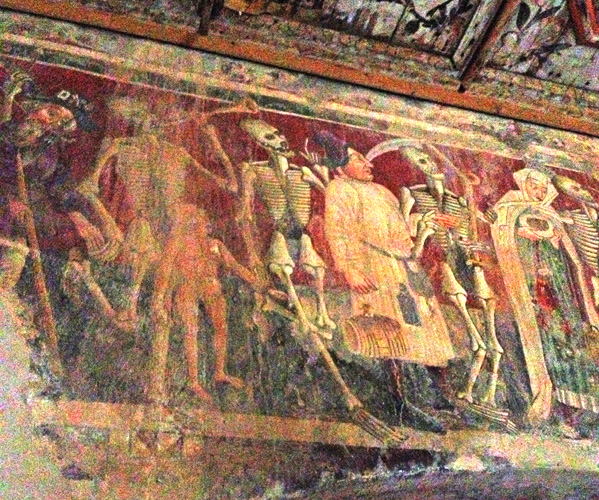
Left of the middle: a skeleton takes a child by the hand. In a German Totentanz, a child asks, "Must I die when I can't yet walk?"
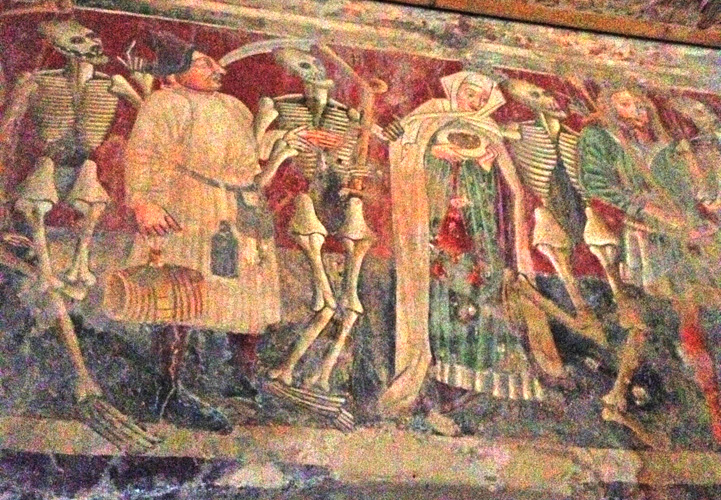
Middle: A man with a barrel and a woman with a bowl. In the Chester Descent into Hell, a woman "tapster" has been left behind in Hell. She used to sell undersize portions of adulterated brew.
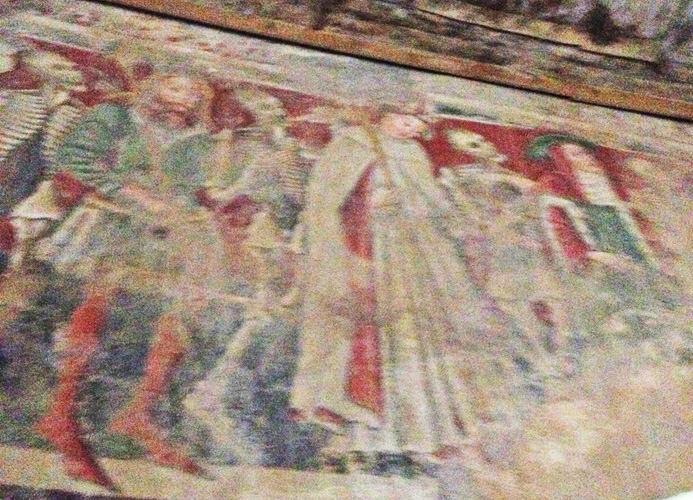
Right of the middle: a knight and a bishop
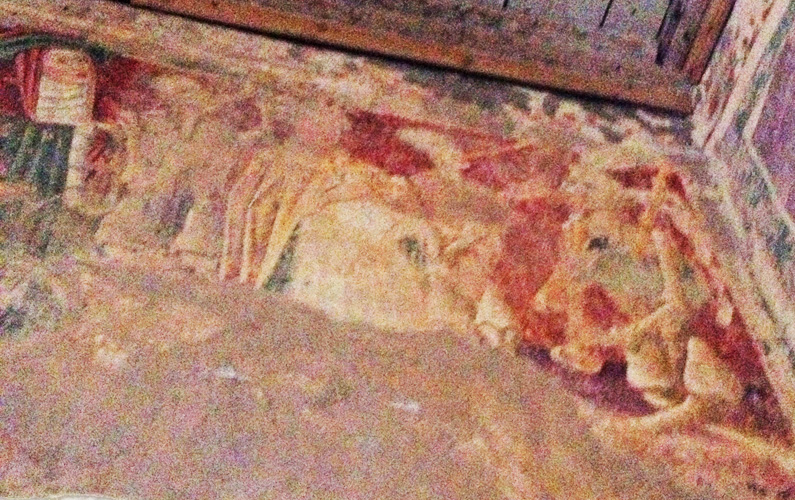
Far right: a king and on the left a man who is richly dressed (a judge?)